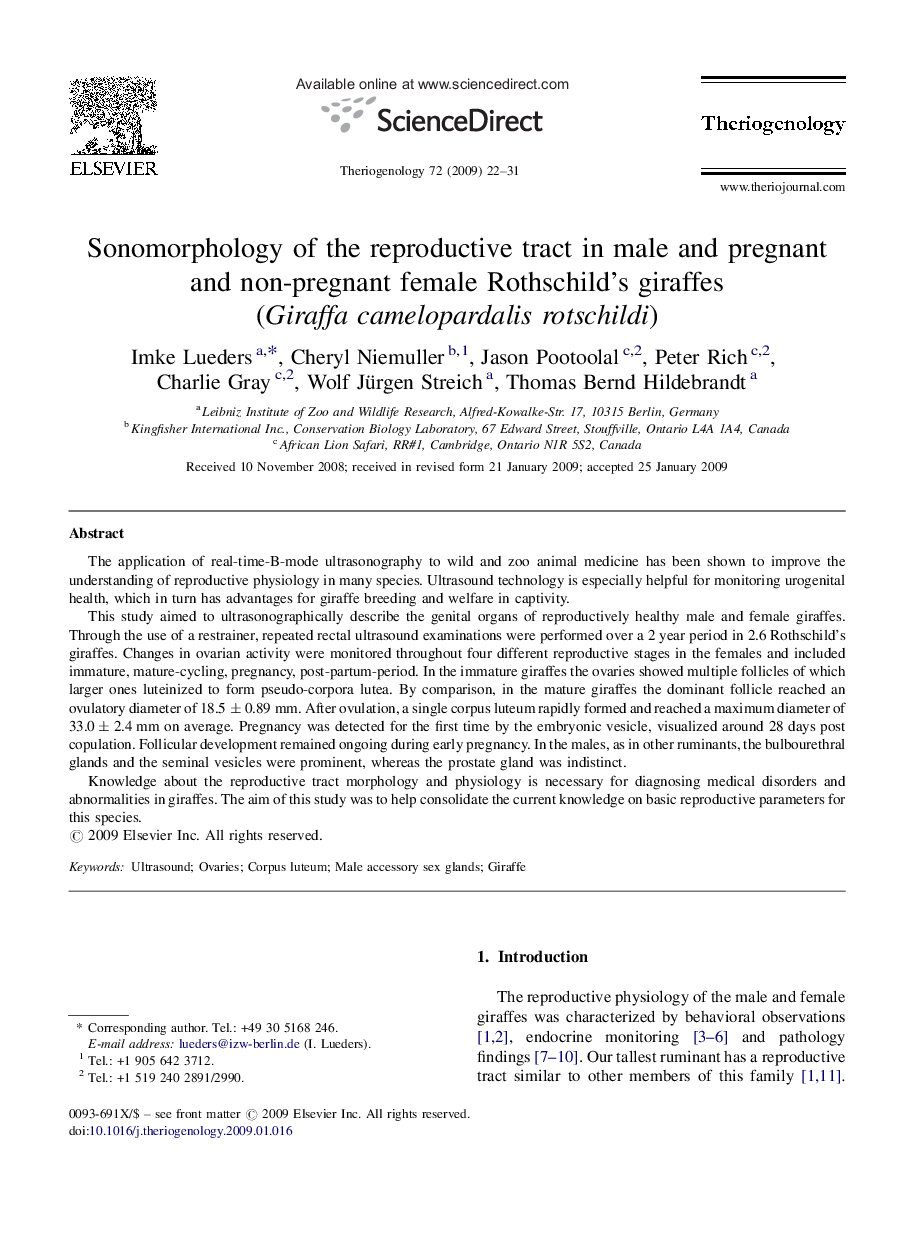| کد مقاله | کد نشریه | سال انتشار | مقاله انگلیسی | نسخه تمام متن |
|---|---|---|---|---|
| 2095994 | 1082148 | 2009 | 10 صفحه PDF | دانلود رایگان |

The application of real-time-B-mode ultrasonography to wild and zoo animal medicine has been shown to improve the understanding of reproductive physiology in many species. Ultrasound technology is especially helpful for monitoring urogenital health, which in turn has advantages for giraffe breeding and welfare in captivity.This study aimed to ultrasonographically describe the genital organs of reproductively healthy male and female giraffes. Through the use of a restrainer, repeated rectal ultrasound examinations were performed over a 2 year period in 2.6 Rothschild's giraffes. Changes in ovarian activity were monitored throughout four different reproductive stages in the females and included immature, mature-cycling, pregnancy, post-partum-period. In the immature giraffes the ovaries showed multiple follicles of which larger ones luteinized to form pseudo-corpora lutea. By comparison, in the mature giraffes the dominant follicle reached an ovulatory diameter of 18.5 ± 0.89 mm. After ovulation, a single corpus luteum rapidly formed and reached a maximum diameter of 33.0 ± 2.4 mm on average. Pregnancy was detected for the first time by the embryonic vesicle, visualized around 28 days post copulation. Follicular development remained ongoing during early pregnancy. In the males, as in other ruminants, the bulbourethral glands and the seminal vesicles were prominent, whereas the prostate gland was indistinct.Knowledge about the reproductive tract morphology and physiology is necessary for diagnosing medical disorders and abnormalities in giraffes. The aim of this study was to help consolidate the current knowledge on basic reproductive parameters for this species.
Journal: Theriogenology - Volume 72, Issue 1, 1 July 2009, Pages 22–31